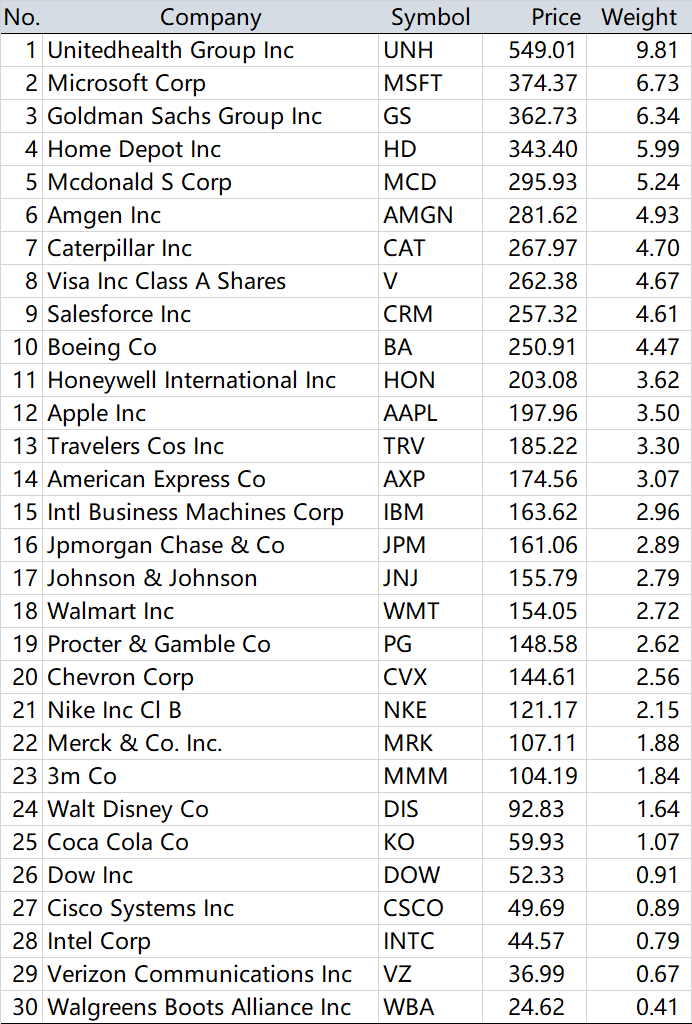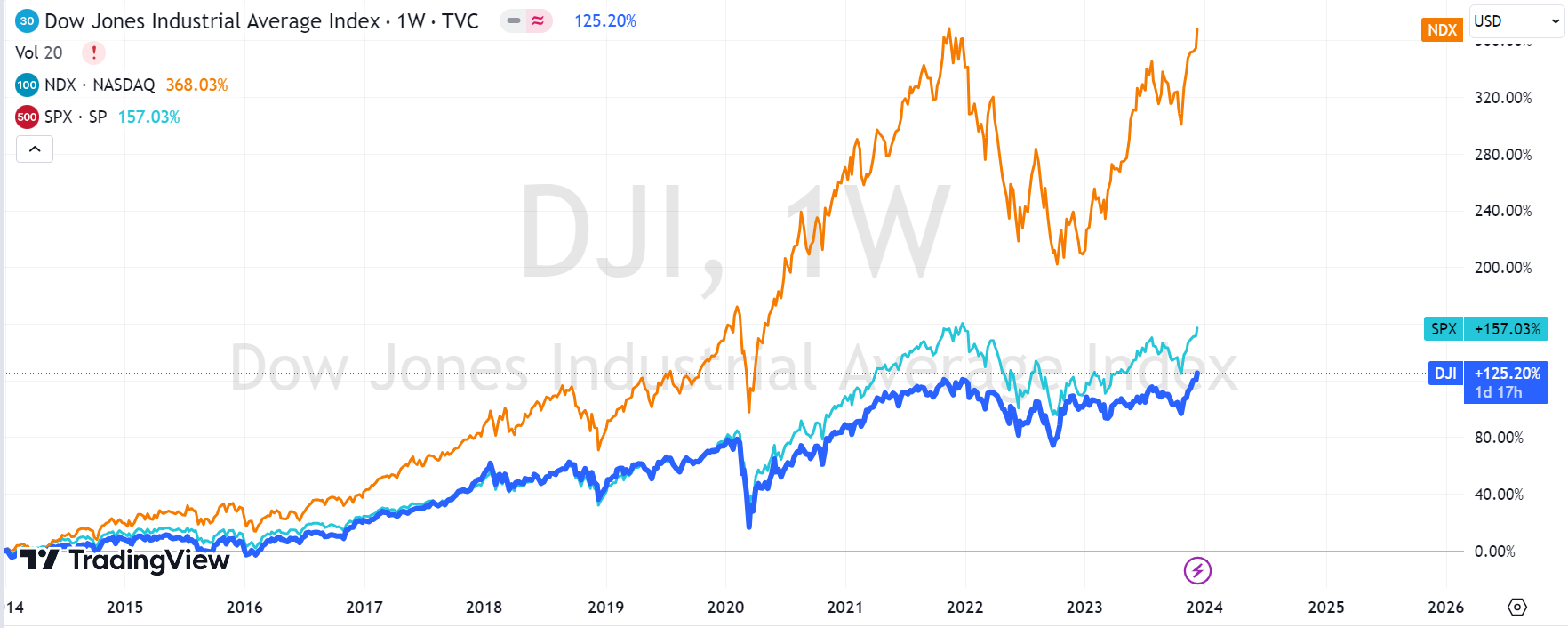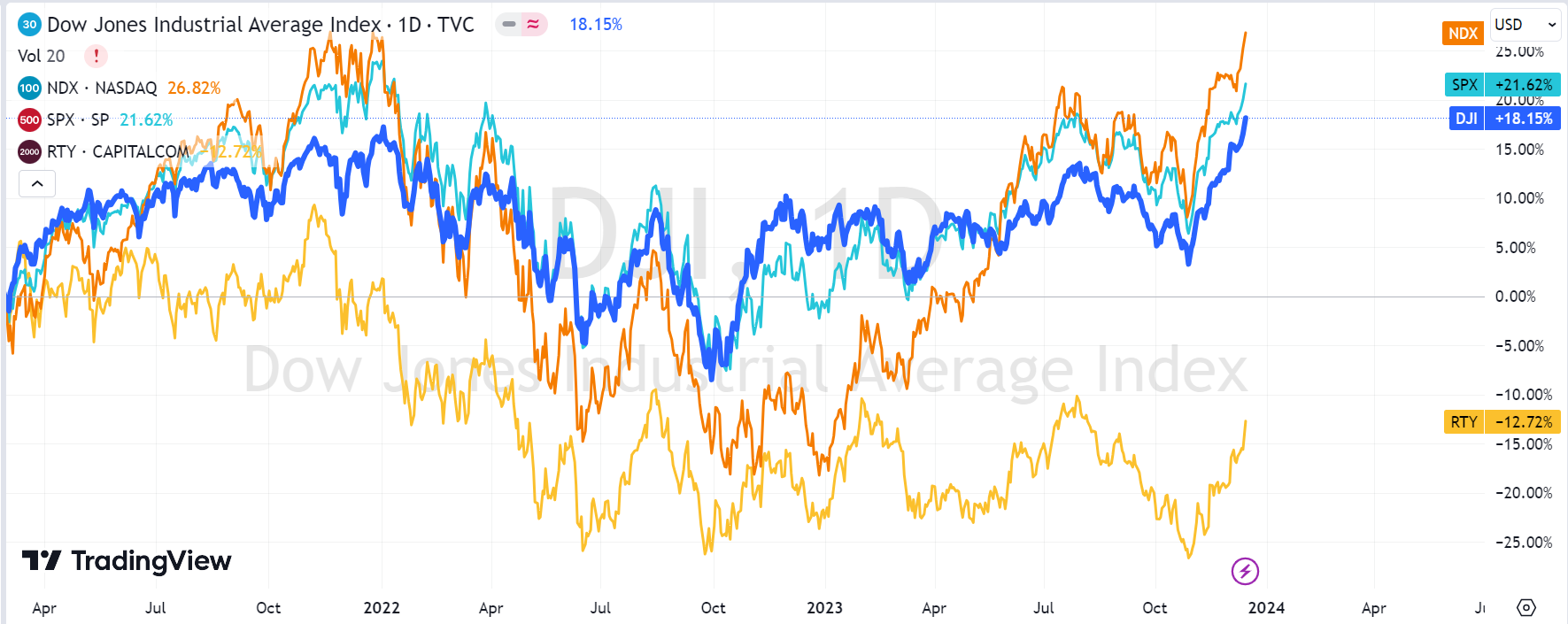Is SPX and QQQ’s following only a matter of time?
December FOMC was so unexpected. The market initially believed that Powell would continue to be cautious in order to prevent the market from celebrating prematurely due to a dovish tone. However, regardless of the Fed's hawkishness, the market was already planning to celebrate, so they decided to announce a more dovish outcome. This includes, but is not limited to:
1. Interest rate hikes have been definitively halted.
2. Rate cuts are officially on the radar of Fed officials.
3. They will not wait for the target inflation rate (2%) before cutting rates (meaning they may do so earlier).
Furthermore, the dot plot indicates that there will be three rate cuts (based on the median target rate) by the end of 2024, which is more than the market's expectation of two cuts.
As a result, the market experienced a sudden celebration: $Apple(AAPL)$ reached a new all-time high, and the $DJIA(.DJI)$ Ialso hit a new record high.
It is understandable that tech stocks like $Microsoft(MSFT)$ reached new highs, as the entire tech sector has been highly favored this year, especially with expectations in AI, with the magnificent seven giants experiencing a 60% increase.
Why did the Dow Jones reach new highs?
There are two reasons: 1) The Dow has fewer components compared to the $S&P 500(.SPX)$ , which has over 500, and the $NASDAQ 100(NDX)$ which has 100 components. Therefore, the Dow is relatively small in terms of its number of stocks.
Additionally, the Dow Jones is one of the few price-weighted indexes. This means that stocks with higher prices have a greater impact on the value of the Dow Jones index compared to stocks with lower prices.
Why is it price-weighted?
The Dow Jones index was established early on when investors had more bond trading experience and less knowledge about stocks. Therefore, a simpler price-weighted calculation method was adopted.
The calculation method for price-weighted indexes is particularly simple, as it only requires using the "arithmetic mean." On the other hand, indexes like the $NASDAQ(.IXIC)$ and the S&P 500 (.SPX), which are market-cap weighted, require calculating a weighted average.
Therefore, what has the greatest impact on the index is not necessarily the stocks with the highest market capitalization but rather those with the highest prices. It is evident that the performance of these top ten weighted stocks such as $UnitedHealth(UNH)$ $Microsoft(MSFT)$ $Goldman Sachs(GS)$ $Home Depot(HD)$ $McDonald's(MCD)$ $Amgen(AMGN)$ $Caterpillar(CAT)$ $Visa(V)$ $Salesforce.com(CRM)$ $Boeing(BA)$ is crucial for the index.
"Apple can't even make it into the top 10 (in terms of price).
So why is it that the Dow Jones Industrial Average (DJI) generally can't outperform the tech-led Nasdaq Composite Index?
Looking at a 10-year timeframe, the DJI has significantly underperformed the Nasdaq 100 Index (NDX) and even the S&P 500, which consists of 500 stocks. This means that reaching new highs is only a 'new high' for this stage, indicating that its historical performance is not as good as the other two indices and is more of a 'catch-up' move.
Some people believe that small-cap stocks may perform better, and indeed, the Russell 2000 Index $iShares Russell 2000 ETF(IWM)$ tends to perform better during rebound periods (under loose monetary policy expectations) because of its greater elasticity. However, in the long run, it does not perform better than the three major indices.
But will this trend continue in the long run? It depends on the concentration of trading.
Trading more concentrated?
Yes, the fact that indices with lower sample sizes are reaching new highs indicates that trading is becoming more concentrated in individual outstanding stocks. The reasons include, but are not limited to:
1. Large companies (especially tech companies) have developed near-monopoly-like resource advantages, making it difficult for new companies to have an impact on the indices. Even heavyweight companies like OpenAI, with a valuation of nearly $100 billion, would find it difficult to threaten indices composed of trillion-dollar market cap companies.
2. Value, trend, and growth trading all select top companies, and quantitative algorithms exhibit strong convergence. Everyone selects similar stocks, naturally leading to a concentration in these top tech stocks.
3. Share buybacks by large companies push up stock prices and reduce the proportion of outstanding shares.
Trading concentration remains the main trend in current trading. While the Dow Jones may reach new highs first, the other two indices just need some time."



Comments